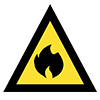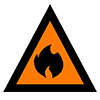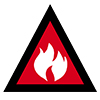‘I’m fortunate on a couple of fronts. BCS Strata and PICA Group are really supportive of arranging for me to go and help the community because it’s critically important, particularly when times get bad. Likewise, I’m lucky because of the NSW Rural Fire Services (RFS) support. I have a large brigade with about 60 active members, so if I can’t make it because of work, someone else can stand in for me.’
After managing an entire fire near Tenterfield New South Wales which included 25 firefighting trucks and 40 RFS personnel, to fighting fires closer to home, like Sydney’s Voyager Point, Andrew’s in-depth fire knowledge from both a brigade and professional strata compliance perspective make him somewhat of a specialist.
‘Understanding buildings and their internal make-up from a strata viewpoint has helped me in firefighting situations. Similarly, proper training from the RFS gives me a good understanding and appreciation of certain fire compliance requirements. They are there for a very real reason.
‘I think the most common thing I see with committees and owners is they don’t take the simple steps to comply, particularly older buildings. As a volunteer and strata professional, it’s not uncommon to see older buildings that don’t have fire safety measures in place be reluctant to introduce them. For example, just making sure you have done the basics, like extinguishers and alarms in the stairwells, makes a big difference.
When it comes to advocating for fire safety, Andrew it isn’t just about making sure that committees and owners comply with relevant fire safety standards. It’s also mainly about regular building maintenance and repairs with ongoing checks and schedules.
Andrew stresses the need for proactive building maintenance. Caring for buildings can save lives and reduce unnecessary costs to owners. And with some states, like NSW, introducing legislation outlining that if an accident should occur due to a foreseeable lack of maintenance, the committee can be held solely responsible and sued.
‘Owners and committees shouldn’t be waiting for something to break, clearing things like leaves and pipes, checking electrics are working and making sure water or heating systems are functioning—by professionals—saves things from triggering a disaster. Active management is one of the keys to reducing risk and liability for committees and reducing the risk of fire.’
Andrew also says when it comes to fighting bushfires, buildings and properties that are well prepared are more likely to survive and recommends following RFS advice.
During a bush fire, Alert Levels are used to indicate the level of threat from a fire.
Remember – don’t wait for a warning. Some fires start and spread so quickly that there may not be any time for a sign. If you get a Bush Fire Alert, you must take it seriously. Failure to take action can result in death or injury to you or your family members.
There are three levels of Bush Fire Alerts:

A fire has started. There is no immediate danger. Stay up to date in case the situation changes.

There is a heightened level of threat. Conditions are changing, and you must start taking action to protect yourself and your family.

An Emergency Warning is the highest level of Bush Fire Alert. You may be in danger and need to take action immediately. Any delay now puts your life at risk. For some fires, you may hear a warning message over your radio or television, such as a siren, or you may receive an Emergency Alert text message or phone call. Other fires may start so quickly that there will be no time for any warning at all.
Prepare your common property against bushfires by having fully qualified and insured professionals:
To access more strata resources or to stay up to date on regular updates, sign up to receive our newsletter. Or, click here for a free strata assessment. One of our team members can assist you – it’s free and carries no obligation.